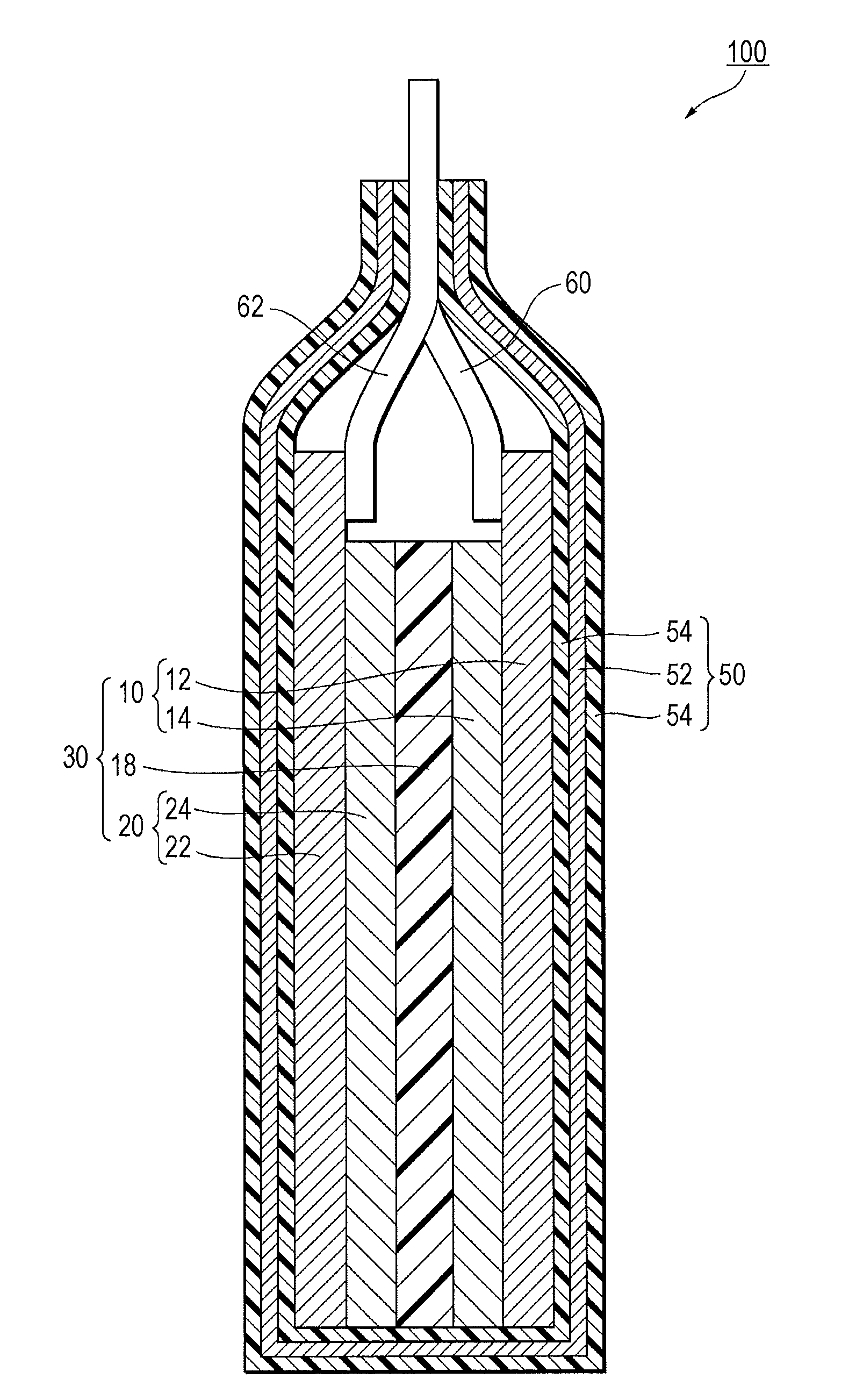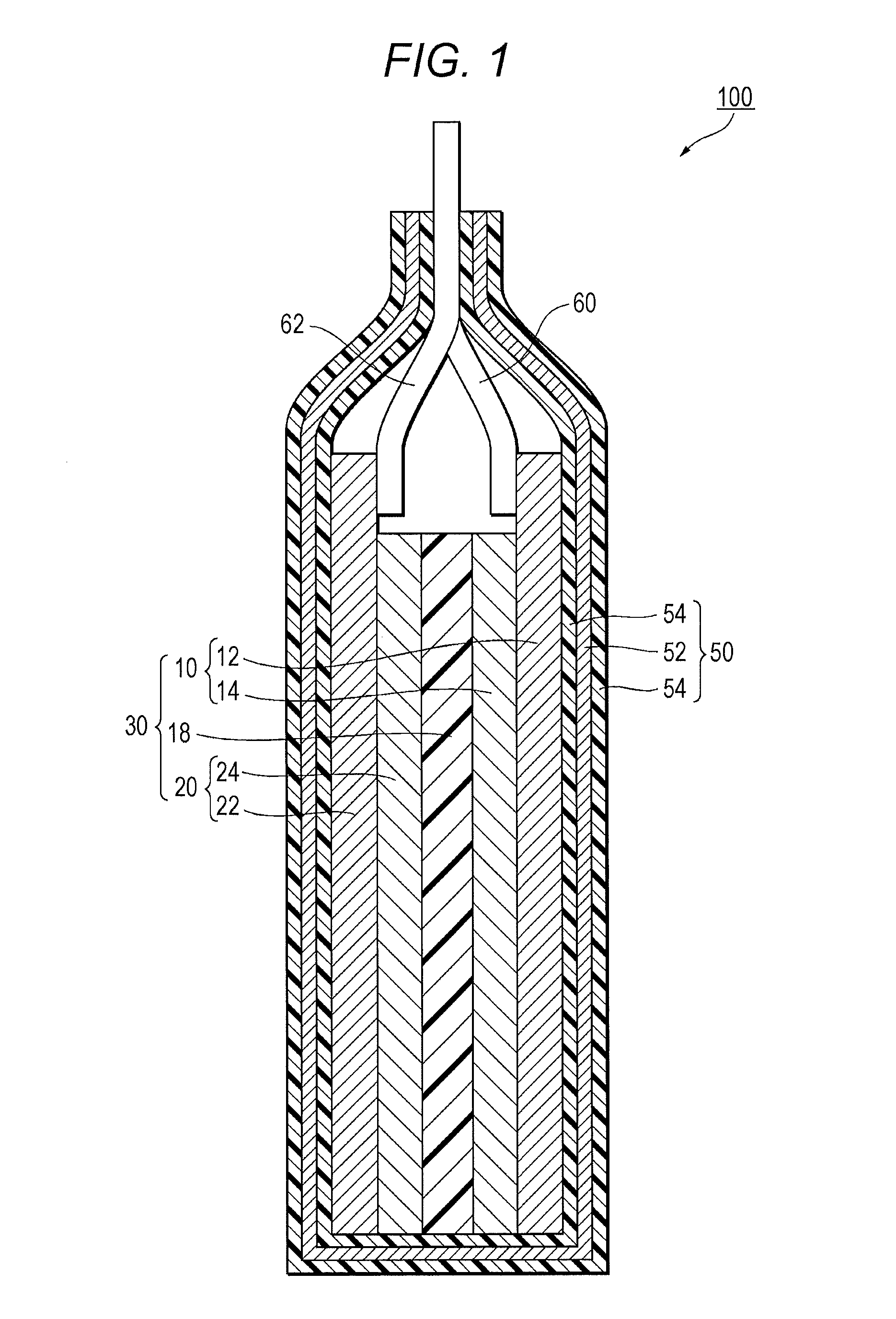Negative electrode for lithium ion secondary battery, and lithium ion secondary battery using the same
a lithium ion secondary battery and negative electrode technology, applied in cell components, electrochemical generators, transportation and packaging, etc., can solve the problem of too high adhesion between the polyacrylic acid and the negative electrode current collector, and suppress the falloff of the negative electrode active material layer
- Summary
- Abstract
- Description
- Claims
- Application Information
AI Technical Summary
Benefits of technology
Problems solved by technology
Method used
Image
Examples
example 1
Fabrication of Negative Electrode for Lithium Ion Secondary Battery
[0064]A paste of negative electrode slurry was fabricated by mixing and dispersing 60 wt % of SiO, which has been subjected to the disproportionation reaction in the thermal treatment at 1000° C. under reduced pressure, as the negative electrode active material, 20 wt % of acetylene black as the conductive auxiliary agent, 20 wt % of polyacrylic acid with an average polymerization degree of 11,000 as the binder, and water. Using a comma roll coater, this negative electrode slurry was applied to opposite surfaces of a 10-μm-thick copper foil to have a predetermined thickness, so that a uniform negative electrode active material layer was formed on each surface. Next, in a dry furnace, the negative electrode active material was dried at 100° C. in the air atmosphere. The film thickness of the negative electrode active material layer applied to each surface of the copper foil was adjusted to be substantially the same. U...
example 2
[0069]A negative electrode for a lithium ion secondary battery and a lithium ion secondary battery according to Example 2 were fabricated through the same procedure as that in Example 1 except that the negative electrode sheet was immersed in 5 wt % of a magnesium chloride aqueous solution for 10 minutes, thereby providing magnesium polyacrylate with an average polymerization degree of 11,000 as the cross-linked binder with a cross-linking degree of 60%.
example 3
[0070]A negative electrode for a lithium ion secondary battery and a lithium ion secondary battery according to Example 3 were fabricated through the same procedure as that in Example 1 except that the negative electrode sheet was immersed in 5 wt % of a magnesium chloride aqueous solution for 15 minutes, thereby providing magnesium polyacrylate with an average polymerization degree of 11,000 as the cross-linked binder with a cross-linking degree of 90%.
PUM
 Login to View More
Login to View More Abstract
Description
Claims
Application Information
 Login to View More
Login to View More - R&D
- Intellectual Property
- Life Sciences
- Materials
- Tech Scout
- Unparalleled Data Quality
- Higher Quality Content
- 60% Fewer Hallucinations
Browse by: Latest US Patents, China's latest patents, Technical Efficacy Thesaurus, Application Domain, Technology Topic, Popular Technical Reports.
© 2025 PatSnap. All rights reserved.Legal|Privacy policy|Modern Slavery Act Transparency Statement|Sitemap|About US| Contact US: help@patsnap.com


